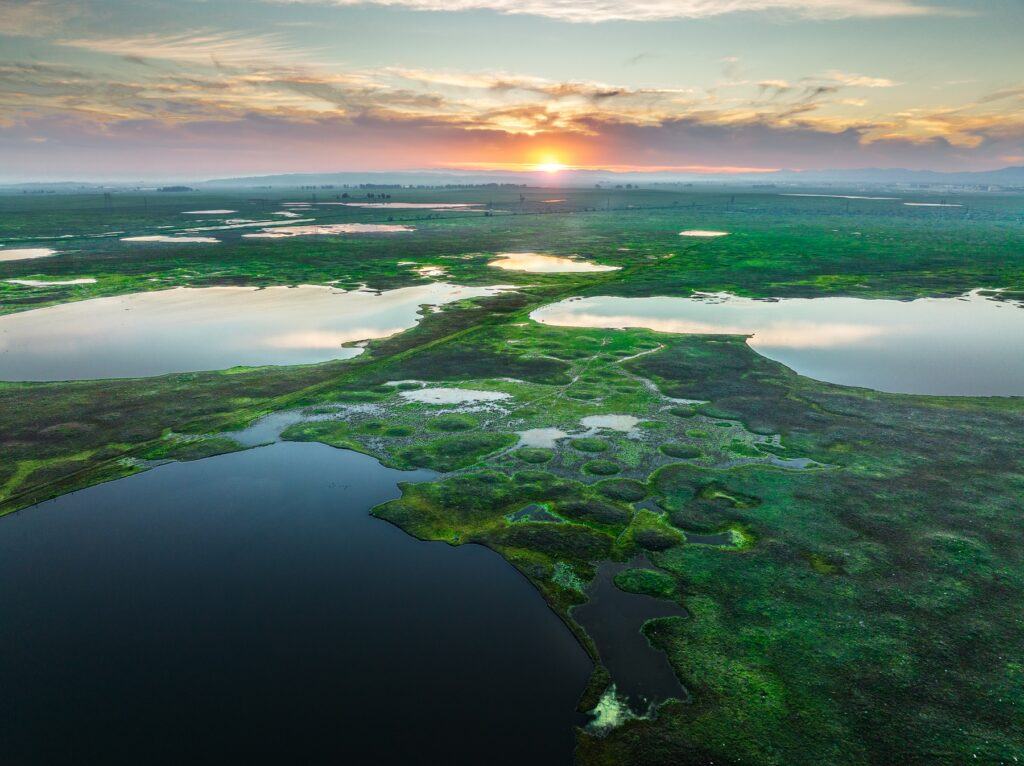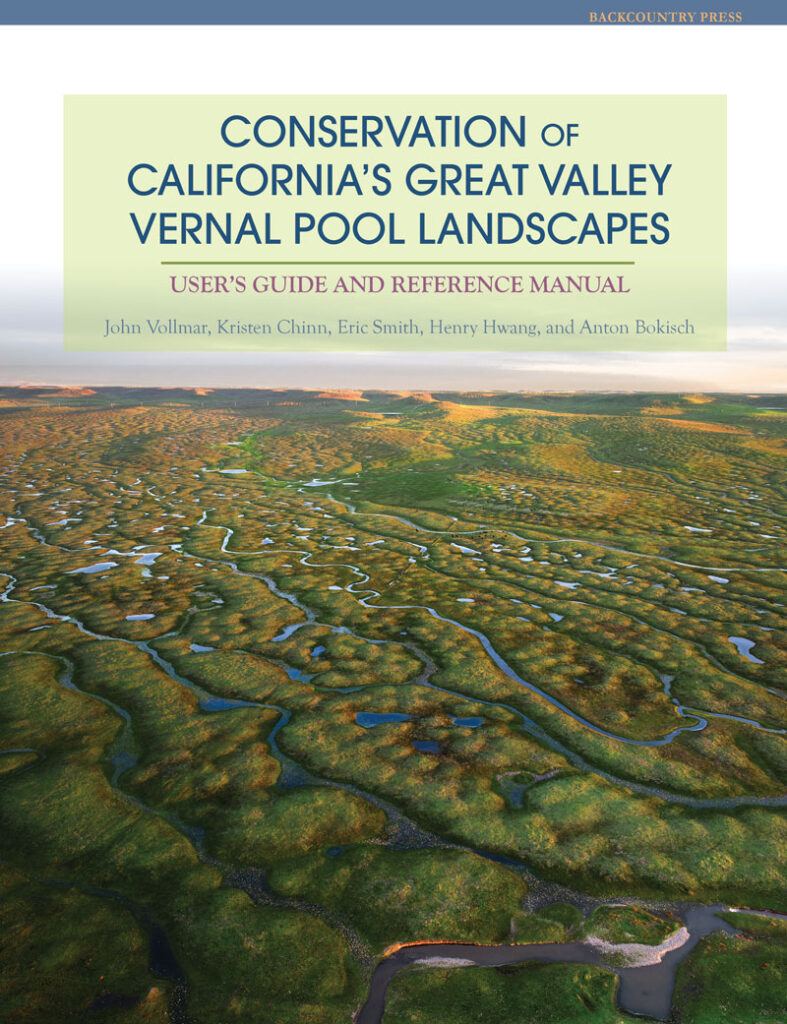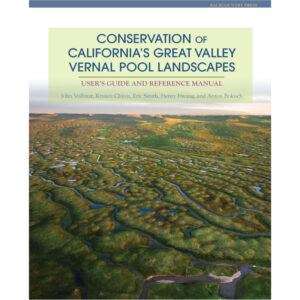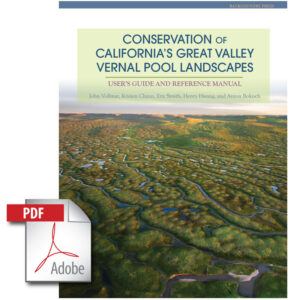An overlooked ephemeral treasure
Vernal pools are ephemeral, seasonal wetlands that form during the rainy season and dry up in the summer. Vernal pools present a dynamic environment that has fostered the evolution of species uniquely adapted to this cyclical pattern. California’s vernal pools, often overlooked treasures nestled in the mosaic of the state’s diverse landscapes, play a crucial role in preserving the state’s biodiversity.
Now, for the first time, there is a comprehensive book that explores some of these diverse habitats. Conservation of California’s Great Valley Vernal Pool Landscapes by John Vollmar, Kristen Chinn, Eric Smith, Henry Hwang, and Anton Bokisch provides the first focused treatment of the best remaining opportunities for vernal pool landscape conservation in the Great Valley.
“I am ecstatic to finally have the book ready for use.” Says lead author John Vollmar. “This book emerged from years of research, analysis, and field experience. It provides inspiration and hope around one of California’s rarest ecosystems.”
Vollmar is the principal at Vollmar Natural Lands Consulting, Inc., a California-based natural resources consulting and research company. This project was funded in part by the Environmental Protection Agency, East Merced Resource Conservation District, and the State of California Wildlife Conservation Board.
Backcountry Press, in Humboldt County, is the publisher of this new book. Because of the support of these funders the eBook is free and the paperback is available for a discounted price.

“We are so proud to have partnered with John Vollmar and his colleagues on this project.” Says Michael Kauffmann, an author, ecologist, and co-owner of Backcountry Press. “This book highlights an astonishing diversity of rare species, some of which are found nowhere else on Earth. If I had to pick a favorite, it would be the California tiger salamander.”
Despite their ecological importance, vernal pools face numerous threats, primarily from urbanization, agriculture, and invasive species. The draining and filling of wetlands for development have led to the loss of many vernal pool habitats. Invasive species, such as non-native grasses, can alter the natural hydrological cycles and outcompete native plants, further jeopardizing the delicate balance of these ecosystems.
“Our greatest hope for this book is that it leads to greater and more effective conservation efforts to protect and restore California’s vernal pools.” Says Kristen Chinn, the book’s second author. “Establishing protected areas and educating the public about the significance of these ecosystems are essential components of conservation efforts aimed at preserving the unique biodiversity of vernal pools.”

California’s vernal pools are more than mere seasonal wetlands; they are vital repositories of biodiversity, housing rare and specialized species that depend on the cyclical nature of these ecosystems. Conservation of California’s Great Valley Vernal Pool Landscapes navigates the challenges of environmental conservation and sustainable development. Recognizing and protecting the significance of vernal pools is not only a matter of preserving California’s natural heritage but also a commitment to maintaining the intricate web of life that these unique ecosystems support.





Leave a Reply